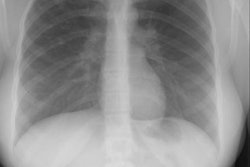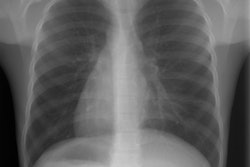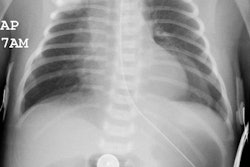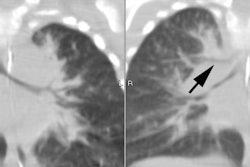Congenital pulmonary venolobar syndrome revisited.
Woodring JH, Howard TA, Kanga JF
The term "congenital pulmonary venolobar syndrome" (CPVS) encompasses a number of congenital abnormalities of the thorax that often occur in combination. Major components of CPVS include hypogenetic lung, partial anomalous pulmonary venous return (this and the former are two of the most constantly occurring components), absence of a pulmonary artery, pulmonary sequestration, systemic arterialization of the lung, absence of the inferior vena cava, and accessory diaphragm. Minor components of CPVS include tracheal trifurcation, eventration and partial absence of the diaphragm, phrenic cyst, horseshoe lung, esophageal and gastric lung, anomalous superior vena cava, and absence of the left pericardium. Most patients with CPVS have no symptoms and require no therapy; however, surgical intervention is often necessary in infants with severe symptoms. The authors review the imaging findings in 29 patients with CPVS and review the literature concerning the diagnosis and management of this complex syndrome in order to improve the understanding of CPVS among radiologists and clinicians.
PMID: 8190958, UI: 94248392



